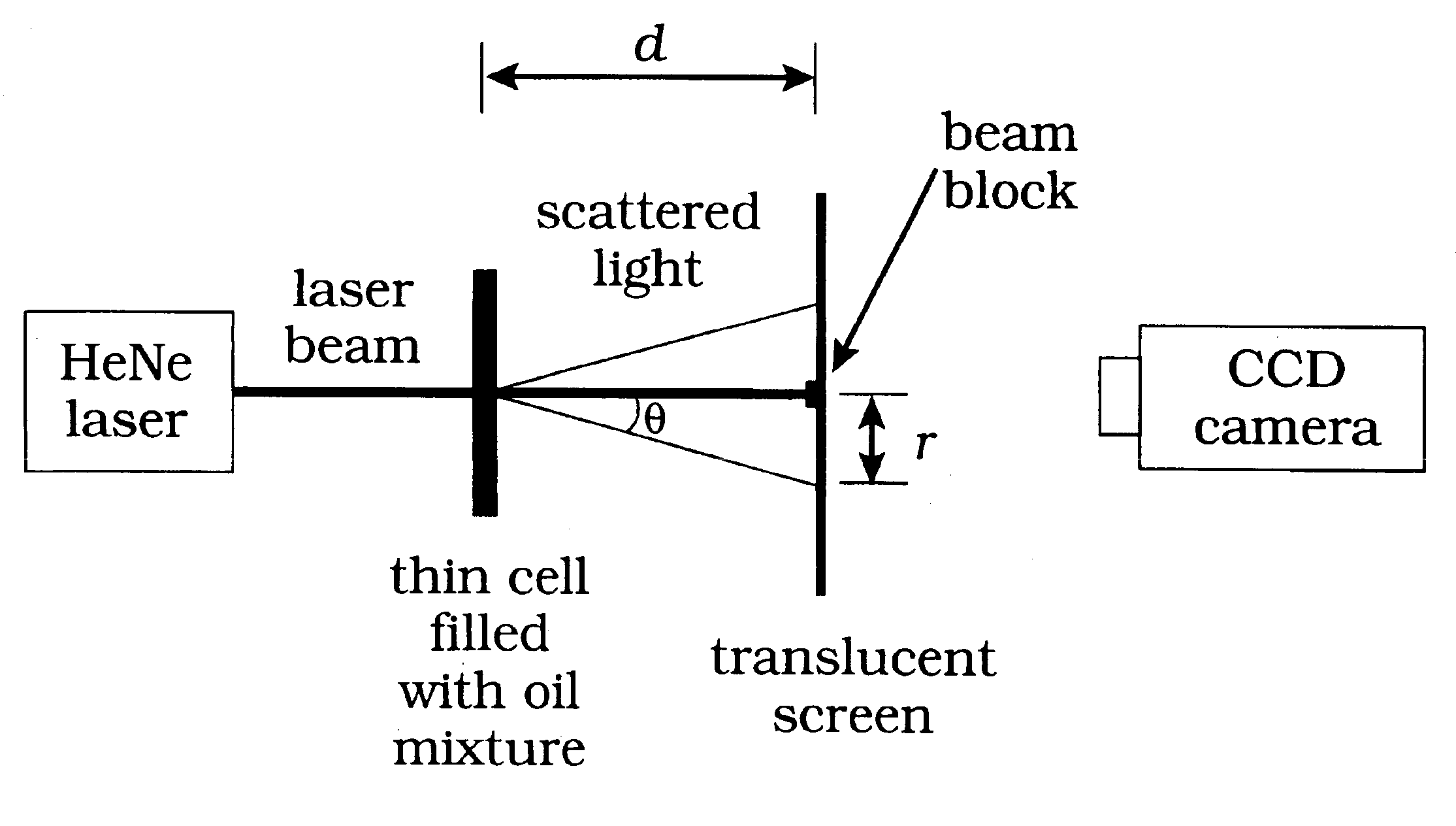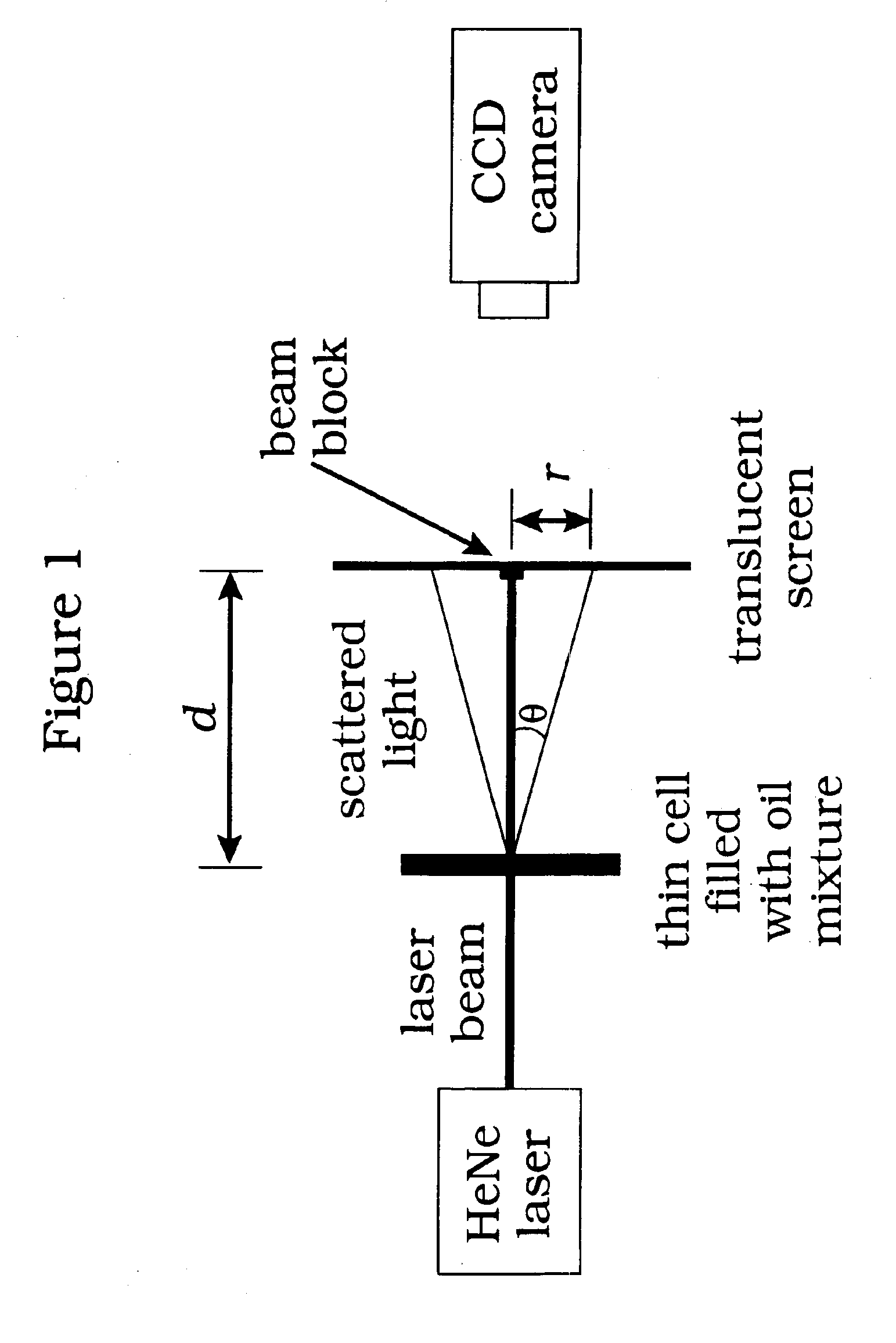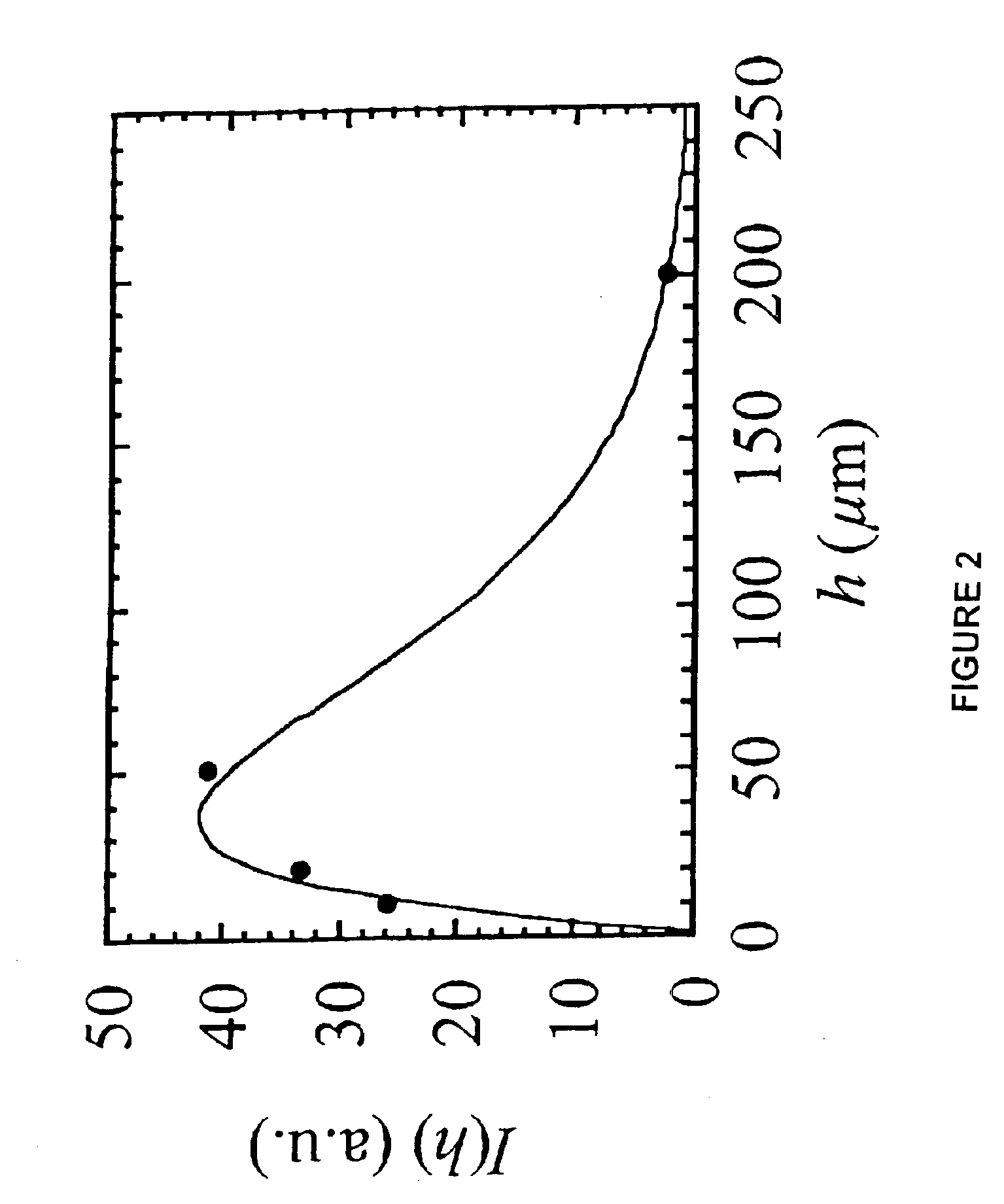Asphaltene aggregation in petroleum oil mixtures determined by small angle light scattering
a technology of petroleum oil mixture and asphaltene, which is applied in the field of asphaltene aggregation, can solve the problems of process equipment fouling, unsatisfactory precipitation of asphaltene, etc., and achieve the effect of reducing the sensitivity to asphaltene aggregation
- Summary
- Abstract
- Description
- Claims
- Application Information
AI Technical Summary
Benefits of technology
Problems solved by technology
Method used
Image
Examples
example
Determining IN and SBN for a Crude Oil Using SALS
The compatibility parameters IN and SBN for a petroleum oil are obtained by the following procedure which essentially replaces the microscopic method for detecting asphaltene aggregates (see U.S. Pat. No. 5,997,723 and U.S. Pat. No. 5,871,634) with the present invention, the SALS method for detecting asphaltene aggregates. A volume Voil the departiculated petroleum oil (e.g. Souedie) is diluted with an aromatic solvent (e.g. toluene) of volume Varo. A volume Vali of a non-polar aliphatic solvent (e.g. n-heptane) is added to this mixture and stirred. Any possible asphaltene aggregation is allowed to proceed as in U.S. Pat. No. 5,997,723 and U.S. Pat. No. 5,871,634. The thin optical cell is loaded with the mixture, and I(q) is measured using the SALS apparatus. For fixed Voil and Varo, by repeating the SALS measurement for different Vali, a set of SALS intensities I(q, Vali) are obtained. A wavenumber q* (typically 0.3 μm−1) is fixed an...
PUM
 Login to View More
Login to View More Abstract
Description
Claims
Application Information
 Login to View More
Login to View More - R&D
- Intellectual Property
- Life Sciences
- Materials
- Tech Scout
- Unparalleled Data Quality
- Higher Quality Content
- 60% Fewer Hallucinations
Browse by: Latest US Patents, China's latest patents, Technical Efficacy Thesaurus, Application Domain, Technology Topic, Popular Technical Reports.
© 2025 PatSnap. All rights reserved.Legal|Privacy policy|Modern Slavery Act Transparency Statement|Sitemap|About US| Contact US: help@patsnap.com



